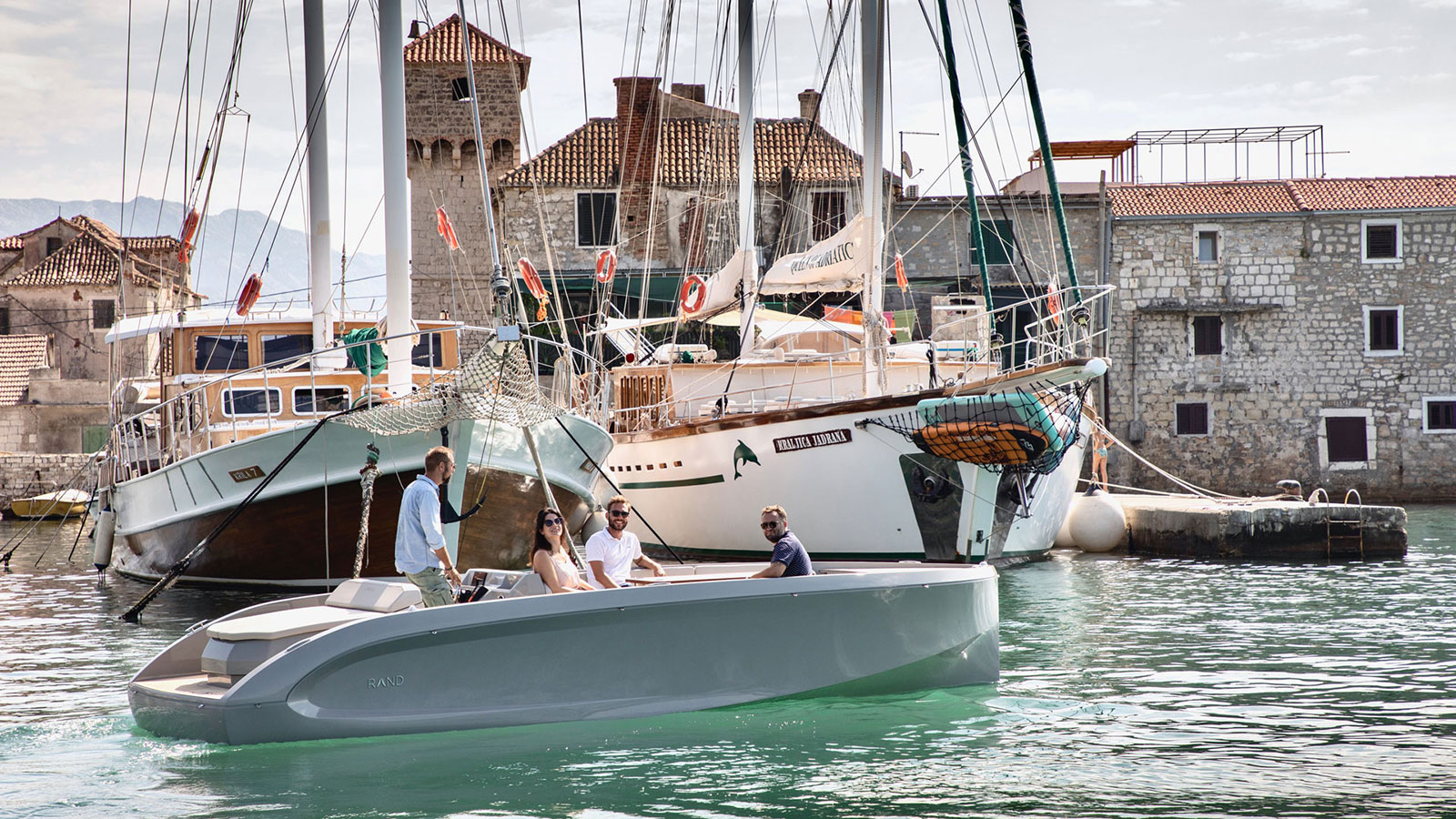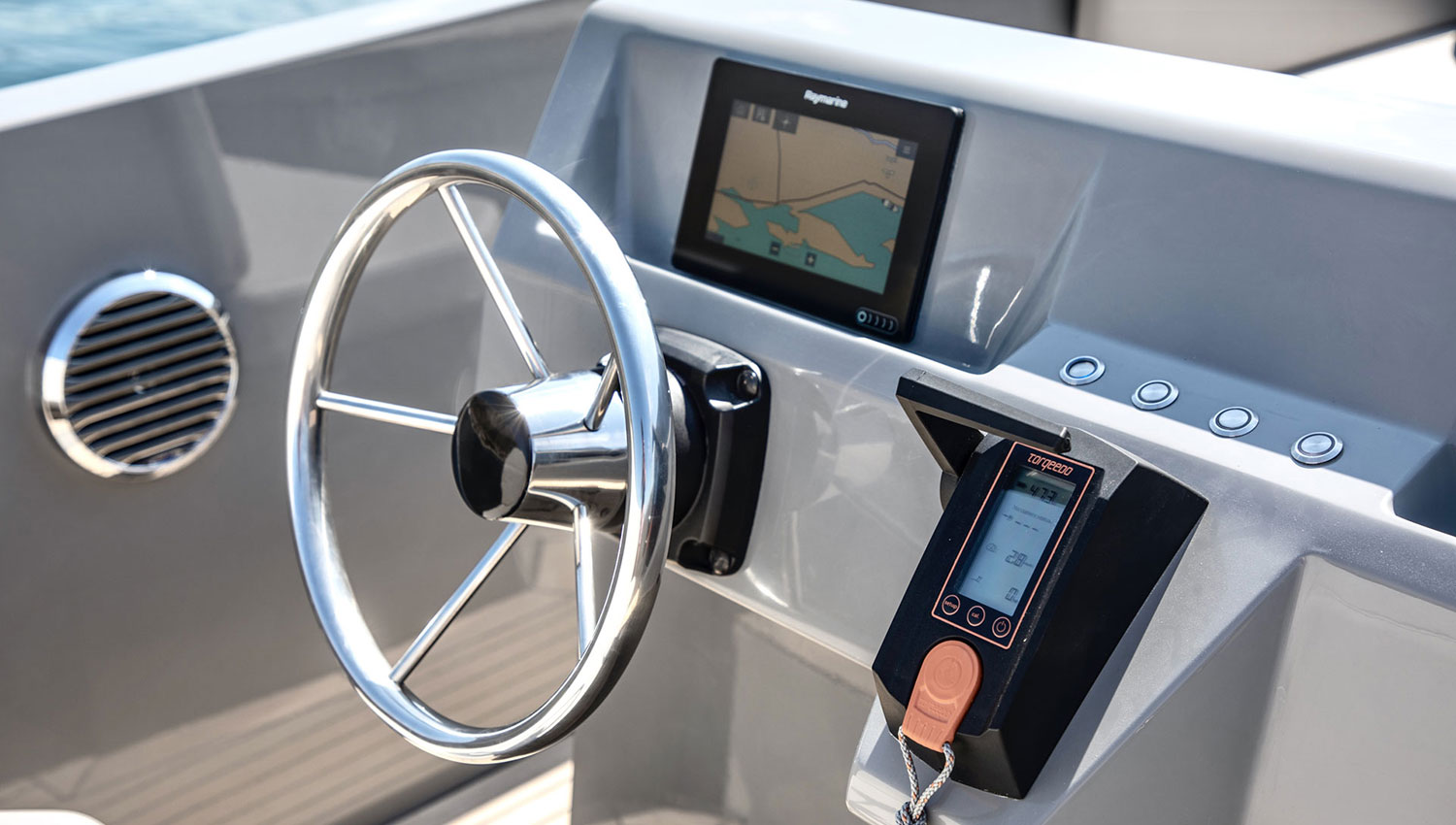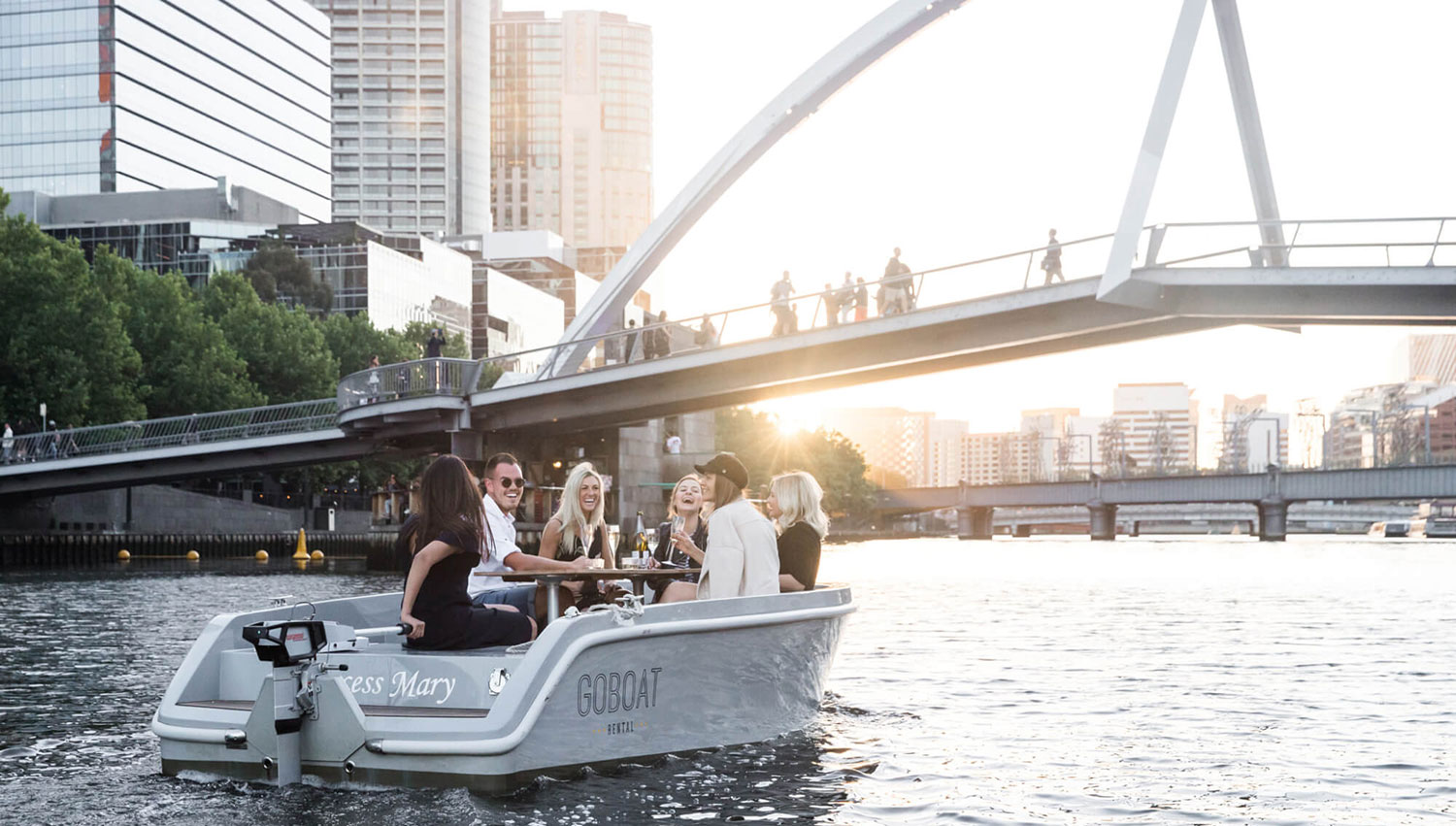


How RAND Boats developed the world’s most sustainable powerboat – with upcycled materials and an electric drive system from Torqeedo. The Mana 23 is designed for a social-centric, sustainable age of boating, explains Carl Kai Rand.
Copenhagen is famous for its cycle paths, but an equally good way to get around in the Danish capital is on its numerous canals. Whether you want to get from A to B fast or see the sights from a new perspective, there are no traffic jams on the water. Distinguished old red-brick buildings alternate with iconic new architecture: the Opera House down by the harbor, the “Black Diamond”, as the new Royal Danish Library is known, or gaily colored Nyhavn houses. Picturesque postcard scenery wherever you look.
Carl Rand is often out and about in Copenhagen. This Danish boatbuilder’s designs are quiet, powerful and stylish. One thing they never are is boring. For him, boring is one of the worst-possible expletives. Because that would mean you haven’t rethought things and their relationship to the world as a whole, but only done what always has been done.
Core made from recycled plastic bottles
He is concerned with the question of what a motorboat should be and how it should perform in the 21st century. The answer he has delivered is the Mana 23, a 23-foot day cruiser he claims to be “the world’s greenest powerboat”. In concrete terms, that means only half the materials needed for similar powerboats were used in its construction. The foam core is made from recycled plastic bottles, deck and tables from sustainably produced timber. The Mana 23 is powered by Torqeedo electric drives and solar panels have been installed on the sundeck to ensure even more off-grid functionality.
Carl Rand had to compromise a bit to achieve a happy medium between design and sustainable manufacturing, low maintenance and robustness. Some of the resins he used are not produced 100% sustainably. “But if you look at the improvements achieved in recent years, we’re not far off that goal,” he says.

The Mana 23 is powered purely electrically by Torqeedo systems. Solar panels are installed on the sun deck. (Credit: RAND Boats)
In his view a boat is not just a means of transport. He calls it a “social platform”. That means you have to ask new questions about ergonomics and beautiful design. How are seating areas to be arranged? What is the ideal relationship between intimacy and distance? Who is the most important person on board? For Carl Rand even the skipper should feel the same comfort and social connectedness as passengers do.
Boating, he says, is one of the most emotionally engaging hobbies there is. It is not just a question of building a functional boat with the easiest possible maintenance. You have to want to touch and feel a boat. He feels that flat surfaces and straight lines are – wait for it – boring. “You won’t make an impression on people that way,” he says. Carl wants a boat to be exciting and fascinating.
Carl Rand had to compromise a bit to achieve a happy medium between design and sustainable manufacturing, low maintenance and robustness. Some of the resins he used are not produced 100% sustainably. “But if you look at the improvements achieved in recent years, we’re not far off that goal,” he says.
New paths for the marine industry
When you talk to Carl Rand, you can really feel the passion that drives him. He likes to work on the boatbuilding industry’s mental blocks. Big American powerboats used to be a status symbol, but those days are gone, he says. And racing through the waves in a loud, gas-guzzling boat surrounded by exhaust fumes is no longer interesting. “The maritime industry is very traditionally minded,” he points out. “But that’s our best chance to discover new paths and experience nature in a new way.” Reliable partners are all the more important for this boating pioneer. “We are naturally delighted that Torqeedo has been working so hard on rethinking electric drives for so many years,” he says. The two firms have been cooperating for eight years and Carl Rand installed the very first generation of Cruise outboards in his boats. “We need a courageous market leader to find segments in our industry where electrification is the best option.”
Although this market is still relatively new, RAND Boats already has a lot of first-time customers. “That is not least because of the plug-and-play character of the Torqeedo systems,” Carl explains. “You always know exactly how much charge is left and what’s going on in the machine. And when you return to your moorings, you simply plug the cable back in.” This boat designer calls it a “worry-free experience – and that’s the reason why many boatowners are prepared to switch to an electric drive.” But some hurdles still have to be overcome to get more accepted by the target group. “We boat designers have to ‘sail around’ the limited range,” he points out. But here, too, he believes it’s all about rethinking boating. Does a leisure cruiser like the Mana 23 really need the same range as a diesel-powered boat? Who sails that far on a Sunday? What do you really want to do all day on a boat – and what needs and technical requirements can be derived from the answer?

Shared electric mobility on the water: GoBoat has saved 800,000 metric tons of CO2 since 2014 in cities like London and Melbourne. (Credits: RAND Boats/GoBoat)
To satisfy the individual mobility needs of people today, Carl Rand and two partners founded GoBoat in 2014 to take the idea of shared mobility onto the water – purely electric-powered mobility, of course. Simply hire a boat and cast off. “Even in urban communities people enjoy a great feeling of freedom when they’re out on the water. We try to make that possible for everyone, even those who don’t own a boat. All they need is access to water,” he says. Their company now has over 100 employees and operates in Copenhagen, London and Melbourne, to name but three cities. More than a million boating trips have taken place since the company was set up. These “sharing boats” have already made a significant contribution to reducing CO2 emissions. According to GoBoat’s calculations, their e-drives have saved over 800,000 metric tons of this climate killer.
Boating together creates relationships
“It doesn’t matter if it’s a fishing trip or time spent with your mum: if you put two people on a boat for two hours, they’re – as it were – forced to cultivate their relationship,” Carl says. And that’s why he sees boats as a social platform. Being on the water overcomes barriers – between people as well as between human beings and nature.
All this helps you to understand why Carl Rand looks to the future in a very positive frame of mind – by today’s standards. “What we’ve experienced up to now is only the beginning,” he says. “The technology is developing exponentially. The challenge now is to develop it into something humane that enables us to improve our world and our relationships with it.” This visionary boatbuilder thinks technology that only exists for its own sake is – you’ve guessed it – boring. He believes e-mobility is becoming so user-friendly and affordable that change will occur much faster than people who are still clinging to old certainties think: “We’ll all experience a completely new way of being on the water. It’ll be fantastic!”
More information:
Find high-resolution pictures at the: › Torqeedo Dropbox
More information about RAND Boats: › RAND Boats
More information about GoBoat: › GoBoat
Find the main catalogue 2021 here: › Catalogue 2021
Find the commercial catalogue 2021 here: › Commercial Catalogue 2021
Relevant Torqeedo Products
A new state of flow
- Motorboats
- Tech
- People
